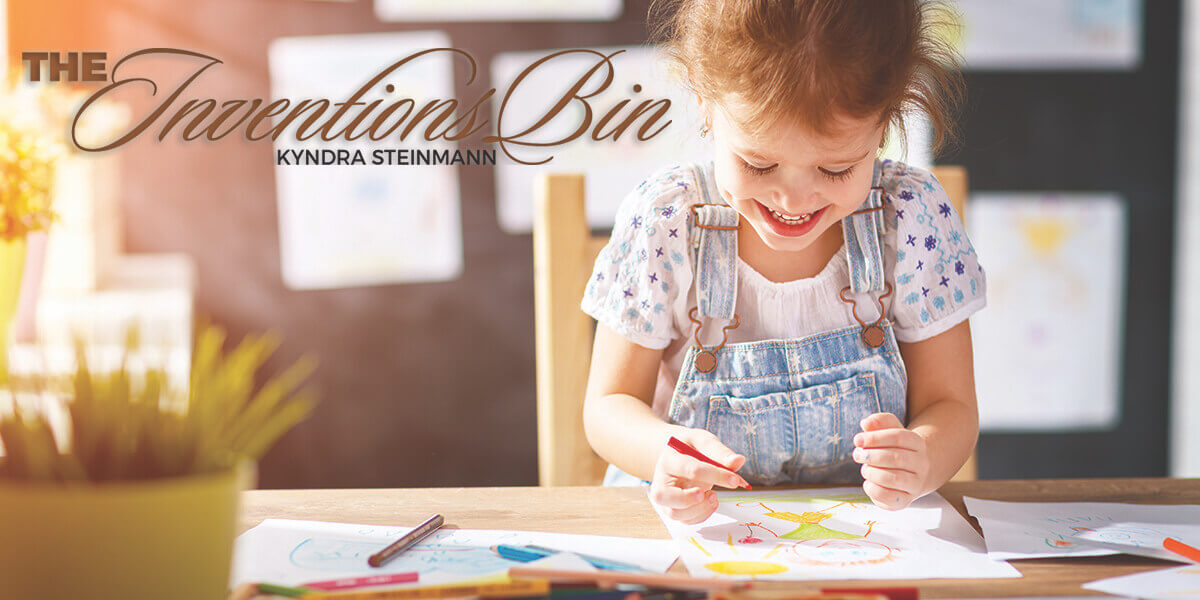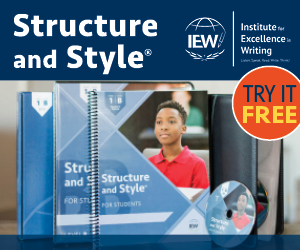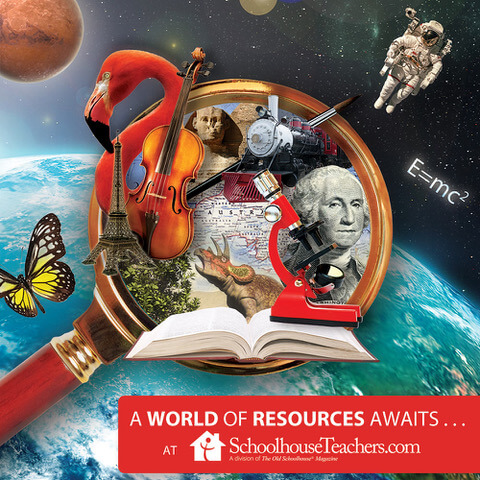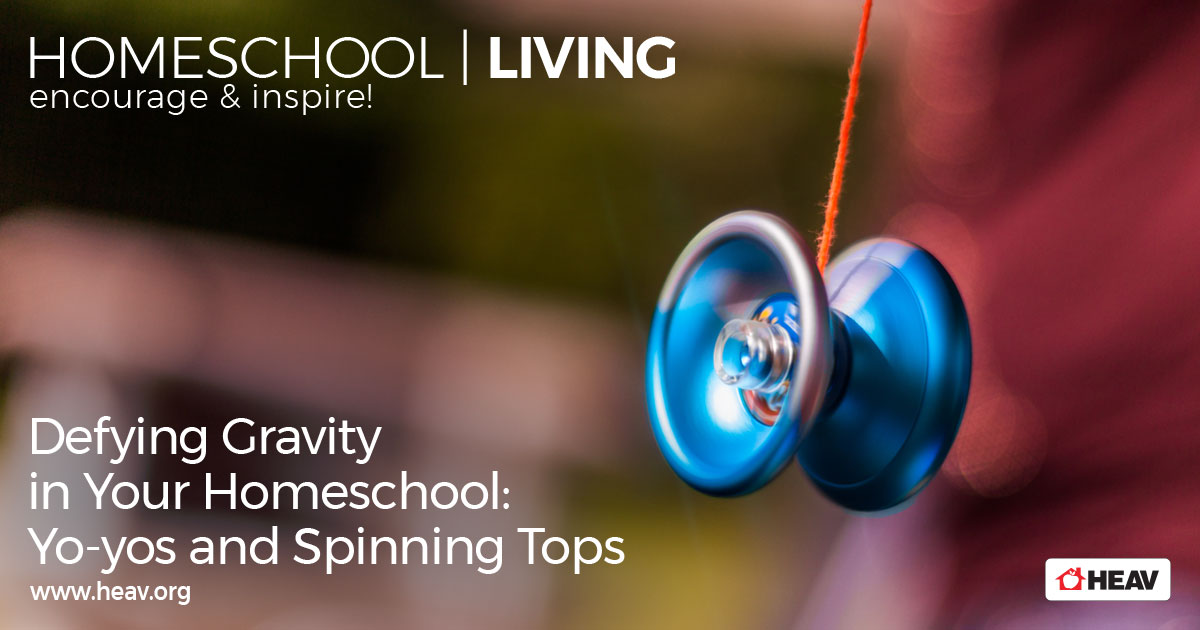Inventive Play: Inventions Bin
by Kyndra Steinmann
One of the wonderful things about homeschooling is the way it enables me to give my children the gift of time—not just time with me and time with each other, but time for inventive play, discovery and creation. All three big children love to make things. They use all the usual things, like Legos ® and paper, but I’ve been wanting to provide them with something more to spark the imagination. I want them to make things out of supplies like string, buttons, random bolts, corks, and other bits and pieces available.
The difficulty is that we live in a small house and Jack is a typically inquisitive and active toddler. If I’m going to supply these things, they need to have a place to go that is out of his reach.
Enter the “inventions bin” — a labeled dishpan on a shelf out of the toddlers’ reach, full of oddments that I’ve found here and there. I add things from time to time: craft sticks, yarn, wooden clothespins, washers, bottle caps, and anything else I think they might do something interesting with. The rest is really up to the inventor.
I don’t offer much help with “inventions bin” projects. Occasionally I’ll give advice on what kind of string would work best for something. Every once in a while, I’ll do something that takes better fine motor skills than the inventor has. Mostly I leave it to the children to create art (Mouse), machines (Buggle), and construction equipment (Bull). Buggle in particular can spend hours combining materials to get a machine that does exactly what he wants.
Sometimes he just can’t find a way to get the concept in his mind to grow out the available materials. “I need you to buy ____ for the inventions bin,” he’ll say. I try not to do that—reminding him that an engineer must work within the limitations of the available materials and encouraging him to brainstorm other ways to accomplish his objective. This is a good lesson for him, since he tends to focus on one solution as the “right” one, and I want him to learn that some kinds of questions may have more than one good solution.
So much of the academic work we do is particular and finite, so giving children open-ended materials with which to create is an important part of their education and one we need to intentionally include in homeschooling. Study after study has shown that children who grow up to be problem solvers and leaders are the children who had the opportunity to practice problem-solving from an early age.
The farm children of yesteryear received that kind of stimulation from their environment. (Ever tried to get a goat to go or stay where you wanted it to?) Absent this kind of self-teaching environment, we have a responsibility to provide opportunities for similar stimulation.
An inventions bin is not the only way to accomplish this, but it is a good one—esp on rainy days!
Kyndra Steinmann blogs at Sticks, Stones and Chicken Bones on living in a house full of young children, unending questions, and abundant grace. Follow her on Facebook and Pinterest.









